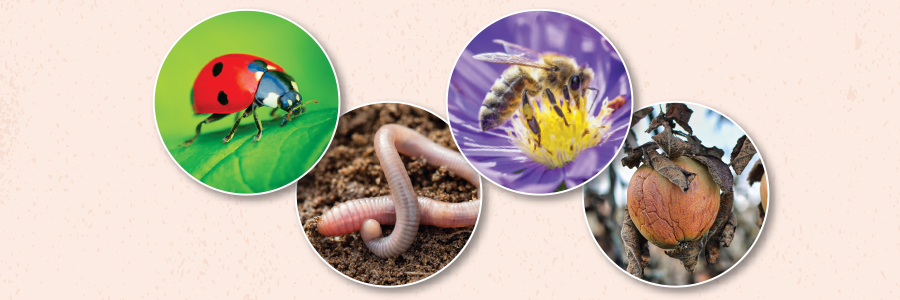


Sign-up for {N}power to get exclusive discounts, newsletters, members-only features, and more!

In 2016, professionals from prestigious universities and advocacy organizations across the U.S., the U.K., and Canada published a consensus statement of concern about the human health and environmental risks associated with glyphosate-based herbicides.1 Yet, glyphosate, the active ingredient in the weedkiller Roundup, remains the most used herbicide in the world. It's reportedly sprayed three times more than all other pesticides on U.S. crops and is also used as a pre-harvest drying agent on staple foods including barley, oats, wheat, and beans.2 3 4 Parks, playgrounds, golf courses, and residential lawns are frequently doused with it, and its overall use has increased approximately 100-fold since its debut in the 1970s.5
Glyphosate is everywhere, which begs the question—what are the long-term environmental impacts of the planet's most-used herbicide? Evidence is mounting, from honeybees to earthworms to soil and plant health, that the environmental toll is much higher than its proponents claim. Consider a sampling.
Researchers concluded glyphosate might factor in the current decline of insect populations, according to a study published in the journal PLOS Biology in 2021. So how is a chemical, supposedly only lethal to weeds, harmful to insects? It inhibits melanin production, essential to their immune defense, leaving them more susceptible to pathogens. The study also found an alarming twist in the implications to public health—glyphosate enhances the susceptibility of a species of mosquito, A. gambiae, to the human malaria parasite. That finding implies it could potentially enhance the mosquitos’ ability to infect humans with malaria.6
Glyphosate could potentially be a factor in honeybee decline, according to a 2018 study at the University of Texas, Austin. The study found that exposing bees to glyphosate at levels currently in the environment reduced the abundance of their gut microbial species. When their normal microbiota was disturbed, they suffered increased weight gain, increased pathogen susceptibility, and increased mortality within hives.7

Earthworms are often called soil engineers, helping to enhance soil nutrient availability, root penetration, and water filtration. So the fact that a team of Austrian researchers found Roundup exposure reduced the productivity and reproductive capabilities of two earthworm species is bad news for soil and plant health. The 2015 study published in the journal Scientific Reports showed that the surface casting activity (soil-enriching nutrient deposits)8 of one species was almost non-existent three weeks after exposure to Roundup, and reproduction of the other species declined by 56 percent after three months.9
Glyphosate was patented as a pipe cleaner before becoming the world’s most used herbicide because of its efficiency as a chelating agent.10 11 Now, that same function may be a “key factor in nutrient deficiencies in crops.” Studies have found that glyphosate residue or drift reduces the uptake of essential minerals like manganese, iron, and zinc in non-target plants, making them more susceptible to disease.12 These deficiencies continue through the food chain, impacting animal and human nutrition.13
Because glyphosate is used in large amounts on genetically-modified crops, a common misconception is that by choosing non-GMO verified foods, you are avoiding glyphosate. In reality, it’s used on many conventional crops, even those that are certified non-GMO. Consequently, products containing ingredients that have never been genetically modified, like wheat and oats, consistently have high levels of glyphosate residue.14 15 While non-GMO verification is crucial in bringing awareness and transparency to the GMO issue, it is not an indicator of glyphosate levels in food. The best way to vote with your dollar against the environmental impacts of glyphosate while also reducing your exposure to it is to choose the certification that prohibits its use altogether: organic.16 17



Sign-up for {N}power to get exclusive discounts, newsletters, members-only features, and more!